Razer
Razer Viper: the lightest Razer mouse does not neglect comfort
Aprox. 59€ - see price -
See specificationsThe trend is for ultra-light gaming mice and Razer is also going for its featherweight mouse. The Viper weighs only 69 g, but does not overlook comfort and manufacturing quality. What outperform the competition?
Positive points
Good grip comfort for such a light mouse.
Elastomeric coating on the edges.
Fast and precise optical sensor.
Really ambidextrous: 2 buttons on each edge.
Quite flexible USB cable.
Bad points
Slice buttons not necessarily easy to operate.
Sensitivity change button under the mouse.
Ultralight, but still a little heavier than its wired competitors.
Our review
Presentation
Until then, the lightest Razer mice struggled to fall below the 100 gram mark. Faced with the rise of competitors especially known to FPS enthusiasts (Finalmouse, Glorious PC Gaming Race ...), the historic brands have decided not to give ground to newcomers. Among them, Razer therefore relies on its Viper to seduce fans of lightness. His wired mouse weighs only 69 g, which promises good handling.
The Razer Viper is positioned at € 89.99, a fairly high-end price for a wired mouse, higher than that of the Glorious Model O (€ 60), but equivalent to those used for the Ultralight models from the manufacturer Finalmouse, for example.
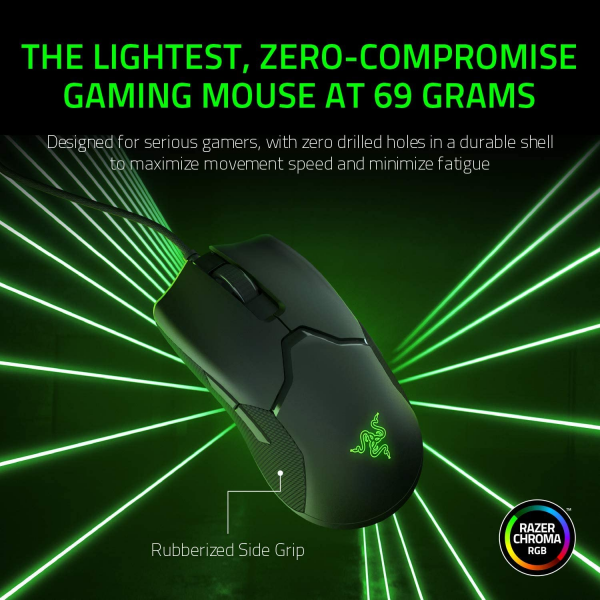
Ergonomics
As small and light as it is, the Viper marks its membership in the Razer range with a design that is certainly fairly common, but which incorporates the manufacturer's codes. So we are facing a mouse all dressed in black, with a grainy mat plastic shell which ends in a slight point at the front. The manufacturer's logo is located on the top, backlit by an RGB LED.
The mouse looks great and Razer did not go so far as to pierce its honeycomb shell to gain a few extra grams, unlike its competitors Finalmouse and Glorious PC Gaming Race. We gain in ease of maintenance, dirt less likely to fall into the mouse. Only the glossy black plastic areas along the inside and the base of the main buttons are prone to soiling.
Despite a perfectly ambidextrous shape, comfort is there. Relative comfort, insofar as this mouse is intended for manipulation with the fingertips, but comfort nonetheless thanks in particular to the slices covered with elastomer with a slight relief. The touch is pleasant and the fingers slide much less than on plastic. We just hope that this material will last, because it remains a weak point.
Combined with the low mass of the mouse (69 g without the cable, 70 to 71 g measured by us with a piece of cable sliding next to the scale), this good grip ensures a secure grip, allowing wide movements and fast. Ideal for FPS when playing in low sensitivity and that's good, since the mouse is precisely intended for this use. The two PTFE pads ensure smooth and fast gliding, especially on fabric rugs. We are also not bothered by the braided cable, flexible enough and that we therefore easily forget as long as nothing is lying on the desk.
The reception of the fingers is also not neglected on the main buttons, well curved to ensure the best possible centering and avoid slipping. Buttons associated with optical switches that offer the feel of conventional mechanical switches, but are activated by interrupting a light beam and not by contact between two metal parts - which is done in conventional switches. This allows Razer to announce higher reliability, the manufacturer does not hesitate to announce a lifetime of 70 million activations, against 50 million for mechanical switches.
The response time is also supposed to be better, announced at 0.2 ms by Razer, although this is not really noticeable in fact. Especially since the rebound of these two buttons is nothing exceptional. The G Pro Wireless thus remains the master in the matter, with its very sensitive buttons which sink and relax at a force of around 35 cN, when those of the Viper activate at around 45 cN and go up to 35 cN (measurements given for information only, the use of a manual dynamometer does not allow great precision). This remains very sensitive, but activation requires a slightly more pronounced press.
We are disillusioned a little while lingering on the edge buttons. Certainly, these fall quite well under the thumb, but not to risk an unexpected activation of the buttons located on the opposite edge, Razer barely makes them protrude from the shell. Consequently, we have a little trouble pushing the one closest to us without moving our thumb, which can be annoying in the heat of the moment. This is probably the price to pay for a mouse that is both very light and completely ambidextrous. Remember that the Model O and Finalmouse Ultralight mice do not have buttons on their right edges and are therefore intended for right-handers rather than left-handers.
Not much to say about the wheel, however, its notches are well marked and the associated switch offers a fairly straightforward click. However, it remains a bit noisy in office use if you have to scroll it quickly.
We may regret the absence of a dedicated button to change the sensitivity of the sensor on the fly on the top of the mouse, it takes place on the bottom. Too bad, because there was a little room for such a button before the wheel. A small multicolored LED indicates the active setting by the color of our choice (you can change it in the mouse software).
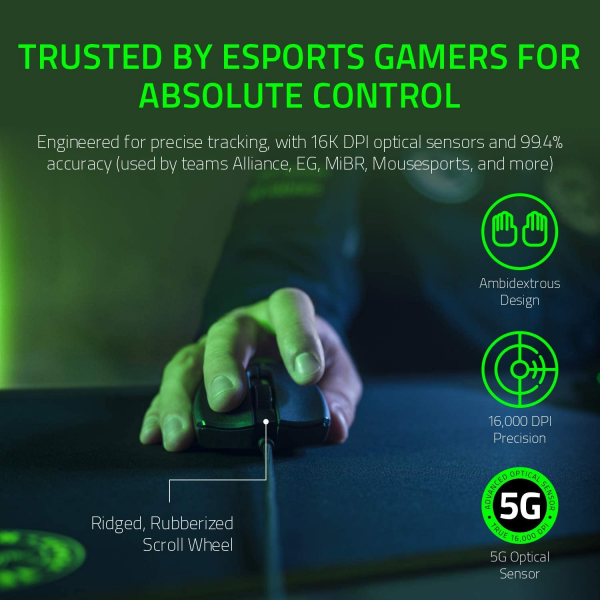
Precision
On the sensor side, nothing new for this Viper which uses the so-called "5G" optical model used in all of the manufacturer's latest mice. It supports accelerations of 50 g and can hold very high speeds, up to 11.43 m / s. Impossible to catch him in default, even with the most abrupt movements. The optical tracking is also impeccable, without smoothing or acceleration which could affect accuracy.
Sensitivity, on the other hand, climbs as usual to 16,000 dpi, which is always just as useless (most FPS players are content with less than 1,000 dpi and rare are the followers of high sensitivities to exceed 4,000 dpi), but will reassure lovers of very high definitions, even if we are just starting to be able to play comfortably in Ultra HD.
Useless on the other hand to hope to play on glass or on other too shiny and reflective materials, a sensor designed for the video game is not made for that and is really really well exploited only with a good mouse pad. However, it will be easy to use it occasionally on more eclectic surfaces (slightly satin office, magazine ...) in the event that it is used on the move.
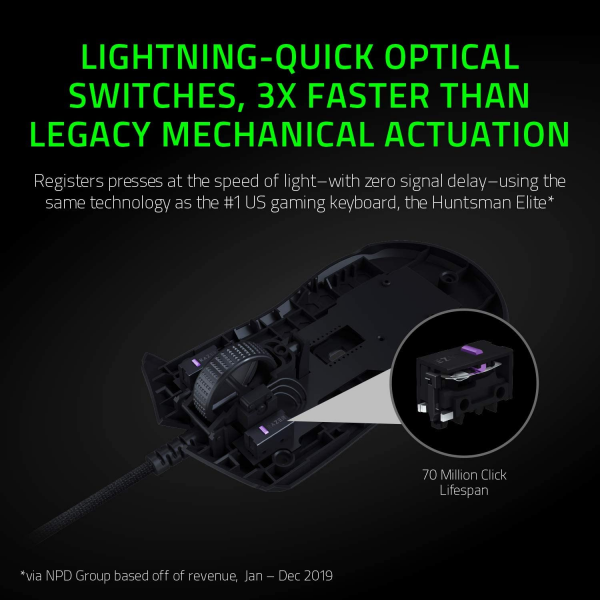
Conclusion
Agile and fast, the Razer Viper offers the performance sought by lovers of fast games. If it is not the lightest on the market, it offers a quality of finish and comfort that justify a few more grams. Although its USB cable is not really disturbing, its wireless version can attract those who expect total freedom of movement.
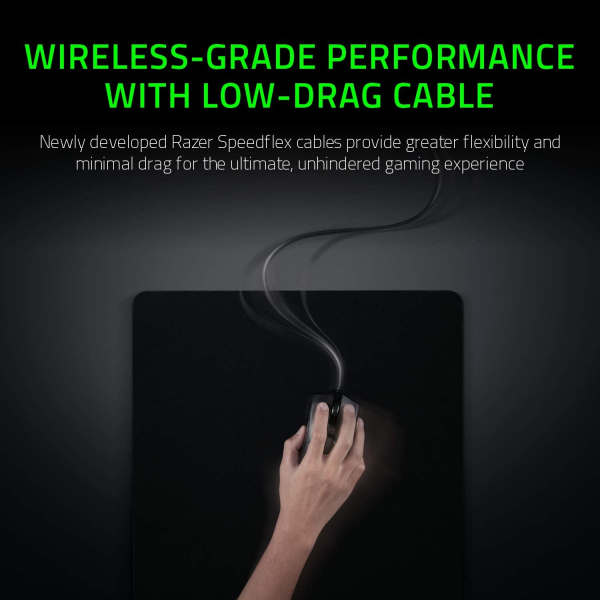
Specifications
Reviews

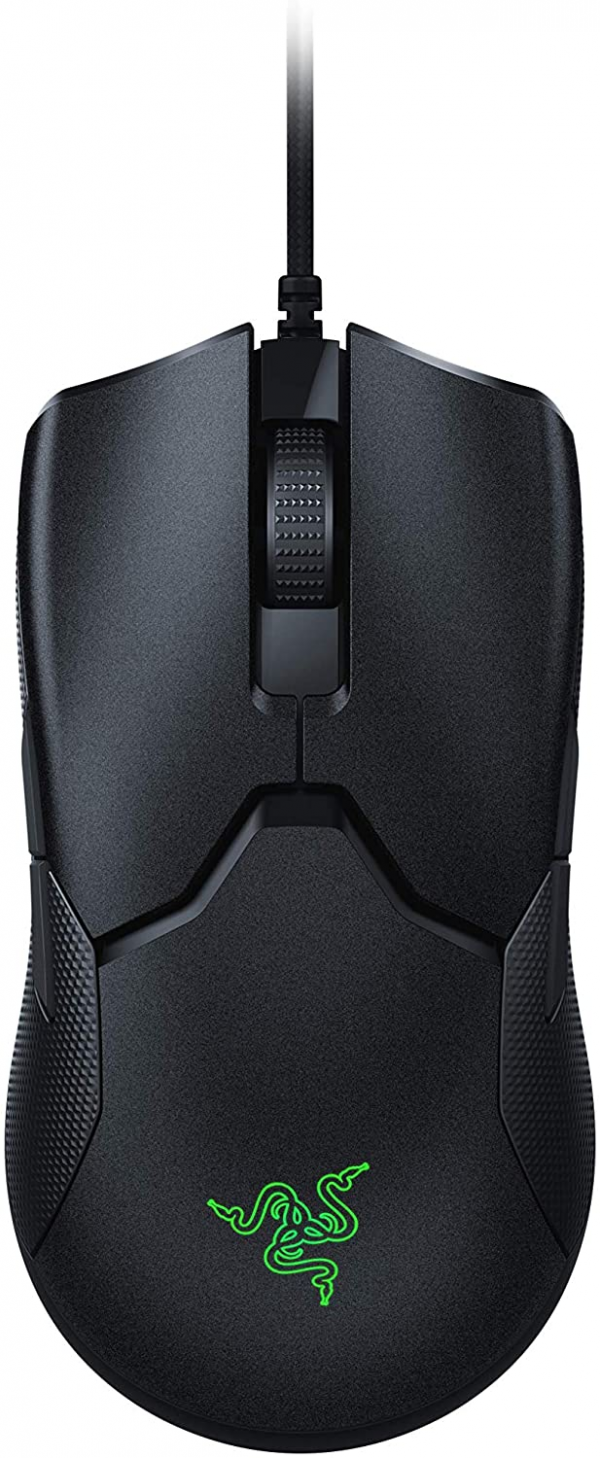
The Best Razer Mouse in a Loooong Time
Razer responds to the lightweight push with a mouse that will have a lot of people taking a look at Razer for the first time in a long time. Small, lightweight, responsive. This will have people talking.
Pros: 69 Grams, Tough shell, Minimal RGB, Optical switches, 5G Sensor, Speedflex cable, Great scroll wheel, NO NEED for Synapse software
Cons: Not many. Triggers have a bit of play and a bit of rattle in the body. Speedflex is not on by with other stock paracords. Other than that - this thing is a banger.
A Review of yet another gaming mouse.
Do not waste time or money.
If you are purchasing this mouse after already owning a logitech gpro or another decent mouse like a glorious mO, please read. This is most comparable to a Gpro but I have one that beats out both which to my suprise is a gwolves hati (A cheaper wired gpro shape but with qc issues)
The 3 stars is not because I think the gpro or others are better, this is still a nice mouse. I'm basing rating of a few things Razer fell short on.
Side buttons will be accidentally pressed and very annoying even if they are disabled through synaps. Can be fixed with removable buttons and still stay pc to those left handys like the gpro did.
Randomly disconnected for 10seconds during gameplay. Others have had same issue.
The clicks are meh. Its just not an improvement, its like getting use to a different switch. Did nothing for my reaction time in aim games, once i got use to them. Not bad or good just optical. Differnt switch.
Few other minor things like rgb doesnt save to on board memory, grip is odd coming from a smaller mouse. I have large hands so It ended of being fine after a few days, but if you have small hands definitely do not buy this mouse. Just better shapes out right now.
Conculsion, It's a 150dollar mouse .... an end game price deserves end game results. Please remember these youtube reviews and some on here praising it, got it for Free ... also because Razer hasnt been great in a long time and they seem to be doing a lot better.
Keep up the effort Razer definitely a good start with Viper after a long time. Just feels rushed and in my opinion not the best to offer for fps aim improvement at the moment.
If ALL YOU WANT is a lightweight mouse than get this, if not look elsewhere.
This thing is defiantly light weight but honestly that's all I can really say about it. I am coming from the Razer death adder and this mouse does not feel nearly as nice to hold. Also since it is Ambidextrous it has the mouse side buttons on both sides and I keep accidentally hitting the buttons on the other side, very annoying. Overall if you just want a really light mouse than this is great but as far as everything else I am not a big fan, I will be sticking my my death adder elite.